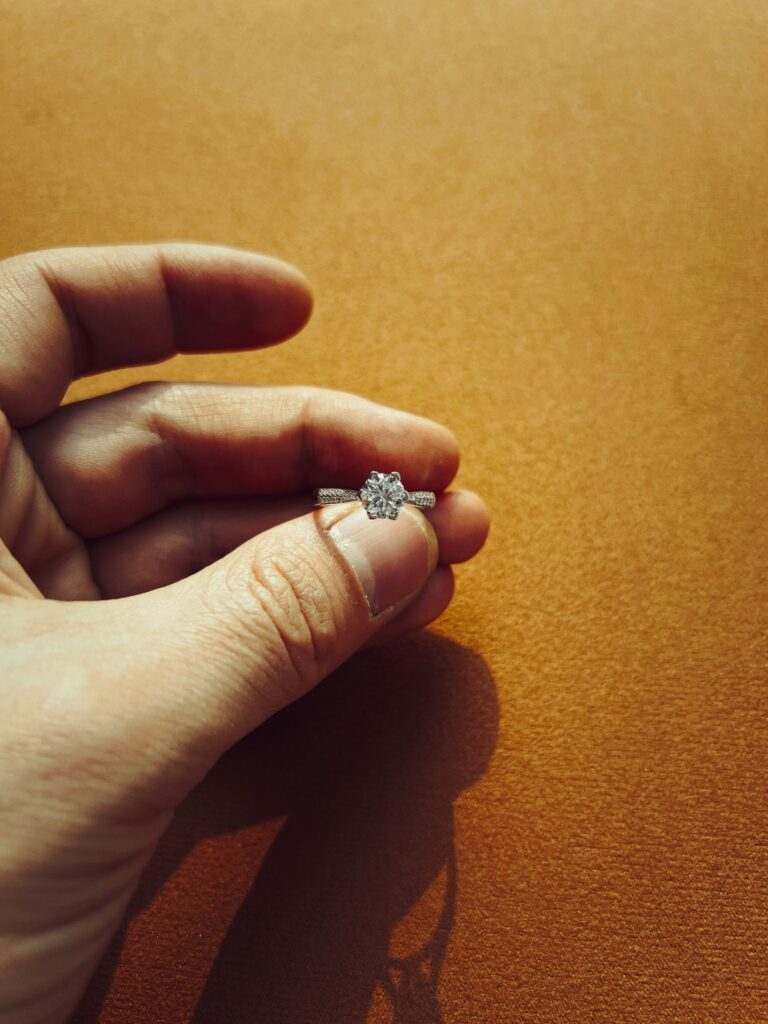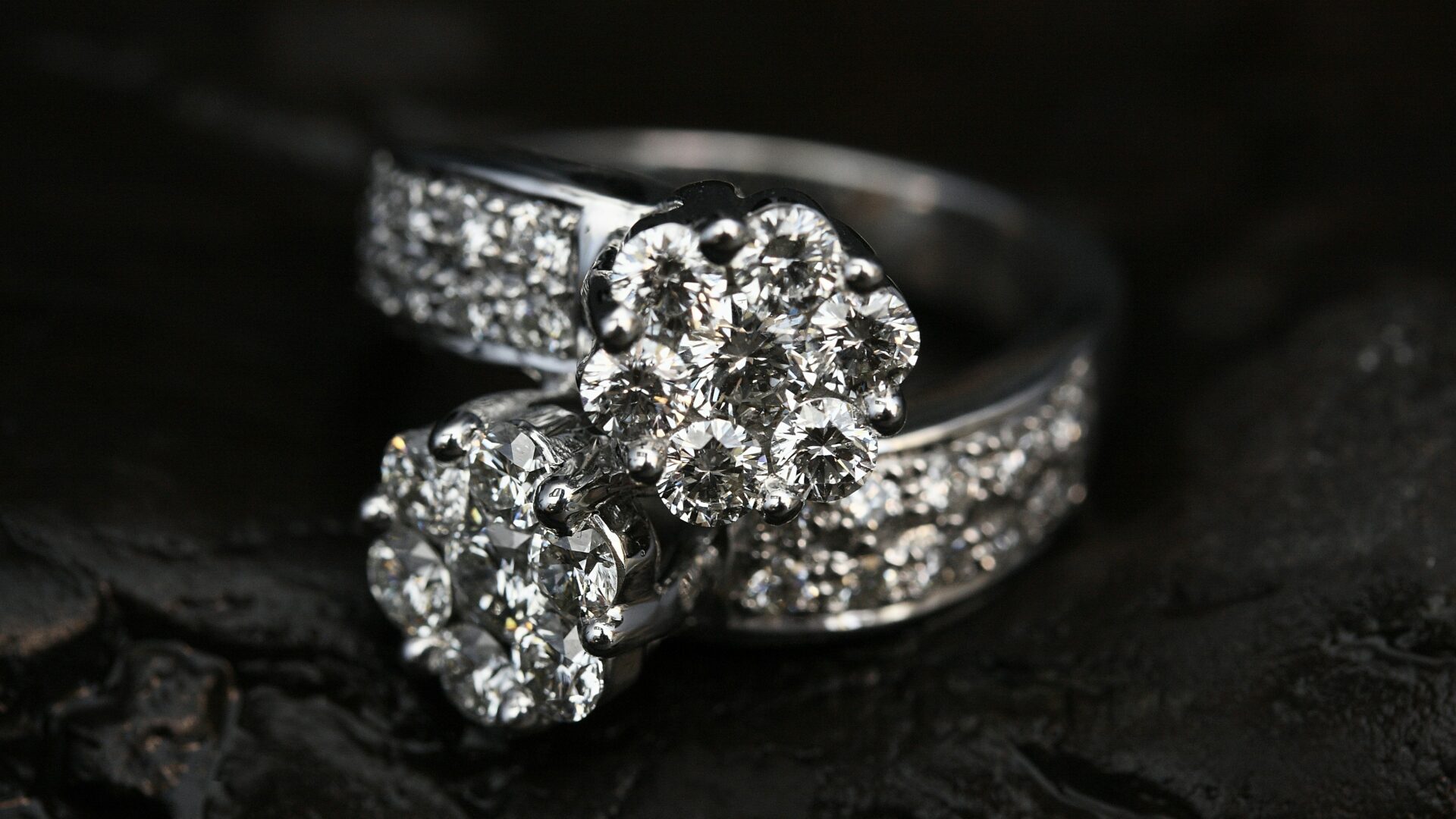Purchasing a diamond, the timeless representation of unending love, can seem like a big leap. All of a sudden, you’re overwhelmed with information: certifications, the four Cs (cut, clarity, colour, and carat), and the crucial question: lab diamond vs. natural diamond? This isn’t a niche question anymore. It’s the question for anyone buying a diamond today. Ever wonder why people are constantly searching for it? Easy. They have a strong desire for transparency, information, and the ability to make decisions that are in line with their values. Tradition and symbolism are losing ground to ethics, sustainability, and price transparency.
In this article, we’ll ditch the marketing fluff and get straight to what really sets lab-grown and natural diamonds apart: what they’re made of, how they look, how they’re priced, the ethical considerations, the environment, and even the long-term financial picture. Let’s get started!
What Exactly Are Lab-Grown Diamonds?
Lab-grown diamonds, also known as synthetic or man-made diamonds, are produced in advanced laboratories by simulating the formation of natural diamonds deep within the Earth. This occurs primarily in two ways:
- High Pressure, High Temperature (HPHT) simulates the intense heat and pressure found in nature.
- Chemical Vapour Deposition (CVD) uses carbon-rich gases to create the diamond layer by layer in a vacuum.
These lab-created diamonds are chemically, physically, and aesthetically identical to real ones. Indeed, they still sparkle and are graded by respected organizations such as the International Gemological Institute (IGI) or the Gemological Institute of America (GIA).
And What About Natural Diamonds?
In contrast, natural diamonds are the product of geological magic that has been working for billions of years. These gems are mined, then cut and polished to show off their brilliance. They were formed far below the Earth’s crust under extreme heat and pressure.
Natural diamonds are distinguished by a few factors:
- Rarity: They take a billion years or more to form.
- Limited Supply: They are more exclusive because they are no longer produced.
- Symbolism: Particularly in engagement rings, they are still frequently connected to custom and classic romance.
Natural diamonds are a one-time thing, a gift from the planet. That rarity, joined with their beauty, has made them super valuable for ages. For lots of folks, a natural diamond is tradition, luxury, and rock-solid commitment. There’s something powerful about owning a piece of history, a tangible piece of Earth, and wearing it as a symbol of love.
Lab-Grown vs. Natural Diamonds: What Sets Them Apart?

Here’s how lab-grown and natural diamonds stack up in the areas that matter most:
1. Origin
- Lab-Grown: Made in a matter of weeks in a lab.
- Natural: Formed naturally over billions of years.
2. Appearance
To the naked eye? You won’t be able to tell them apart. Both types come in a range of cuts, colours, and clarities. And both can be certified by top labs.
3. Price
This is where lab-grown diamonds excel in this regard, both monetarily and practically.
- Lab-Grown: Usually 30-50% less expensive than natural diamonds of similar quality.
- Natural: Pricier, but they tend to hold their value better over time.
4. Ethics and Sustainability
- Lab-Grown: No mining is involved, making them more eco-friendly and conflict-free.
- Natural: Some are ethically sourced, but mining still comes with environmental and ethical questions.
5. Resale Value
- Lab-Grown: Resale value is still developing, but that could change as demand grows.
- Natural: Generally retain more value and are often seen as long-term investments.
The Technology Behind Lab Diamonds: A Peek Inside the Lab
Have you ever wondered how lab-grown diamonds are made? These are the product of advanced engineering, not synthetic fakes.
- 1.5 million PSI and 1,500°C of heat are replicated by HPHT (high-pressure high-temperature) machines.
- Atoms can layer onto a diamond seed after carbon gases are broken down in chemical vapour deposition (CVD) chambers.
- Depending on size, production takes six to ten weeks.
- Labs in Canada, the U.S., and India are leading the way in sustainable diamond innovation.
Buyers are more likely to trust the process behind these beautiful, scientifically created gems when they are aware of this technology.
How Can You Tell the Difference? Lab Testing and Certification Explained
The difference is frequently invisible to the unaided eye, even for experts. Certification can help with that:
- All-grade lab and natural diamonds are GIA (Gemological Institute of America), IGI (International Gemological Institute), and GCAL (Gem Certification & Assurance Lab).
- To find out where the diamond came from, look for laser inscriptions.
- Canadian retailers have to provide certificates and be open about their testing procedures.
When purchasing any kind of diamond, always request documentation.
Diamond Footprint: Which One’s Greener for the Planet?
Many Canadians are concerned about climate change, so the impact on the environment is a significant consideration when making purchases.
- Large-scale mining, ecological disturbance, and significant carbon emissions are all associated with natural diamonds.
- Lab-grown diamonds can reduce carbon emissions by up to 60% and require a lot less water and land.
- If this value is important to you, look for sustainable diamonds that have earned SCS (System Certification Services) certification.
When it comes to eco-friendly jewellery choices, lab-grown options are the clear winner.
Celebrity Choices: Who’s Wearing What?
In addition to influencing a new wave of ethical luxury, celebrities have contributed to the mainstreaming of lab-grown diamonds.
- During her royal tour of South Africa, Meghan Markle wore lab-created diamond earrings from the Canadian brand Kimai (Vogue).
- Emma Watson is a well-known environmental activist who supports lab-grown diamond jewellery and promotes sustainable fashion (Good On You).
- Early Diamond Foundry investor Leonardo DiCaprio has openly supported lab-grown diamonds as a sustainable substitute for mining (Fast Company).
- However, traditionalists like Kate Middleton continue to support natural stones because of their historical significance.
Both styles are being adopted by high-end fashion houses, demonstrating the harmonious coexistence of timeless tradition and ethical innovation.
Beyond Engagement Rings: Unique Ways Canadians Are Using Lab Diamonds
Lab-grown diamonds aren’t only for proposals. Canadians are thinking outside the box in the following ways:
- Memorial diamonds crafted from a loved one’s ashes
- Personalized keepsakes honouring milestones or birthstones
- Business presents that serve as statements about ethical branding
- Jewellery for men and women that is bold and contemporary in style
These multipurpose stones are creating new artistic opportunities.
Clearing Up Some Common Myths
Let’s bust a few misconceptions floating around online:
- “Lab diamonds aren’t real.”
False. They’re real diamonds in every way, just made in a lab instead of underground. - “Natural diamonds are always better.”
Depends on what you value: tradition, budget, or sustainability. There’s no one-size-fits-all answer. - “Lab diamonds look fake.”
False. Even gem experts often need specialized tools to tell the difference.
Which One Should You Choose?
The final call is yours. That really comes down to what matters most to you. Here’s a quick guide:
Go for lab-grown if:
- You want more bling for your budget.
- You care deeply about sustainability and ethics.
- You’re drawn to modern, innovative options.
Choose natural if:
- You see it as a sentimental or long-term investment.
- You’re captivated by the ancient story each stone holds.
- You want something that may hold its value over generations.
Pro Tip: If you’re torn, hybrid designs are a cool option, like using a lab diamond as the main stone with natural diamond accents.
Canadian Retailers & Market Trends: Where to Buy Ethically
Choosing a jeweller who places a high value on quality, sustainability, and craftsmanship is crucial if you want to buy diamonds in Canada in an ethical and knowledgeable manner.
One of the premier destinations to find lab-grown and natural diamonds is Samuel Kleinberg Jewellers in Toronto. Custom jewellery design services that enable customers to collaboratively create unique pieces that represent individual style, life events, and milestones are our most notable offering. In-house professionals make sure every creation satisfies the highest requirements for durability and beauty.
Samuel Kleinberg guarantees a clear and elegant purchasing experience based on decades of experience with in-person consultations and GIA-certified (Gemological Institute of America) stones.
Buying locally gives you peace of mind and supports Canadian craftsmanship, especially when you’re buying something as sentimental as a diamond.
Investment Insights: Are Diamonds a Smart Long-Term Choice?
Diamonds can be used in your financial planning in addition to being a symbol.
- Natural diamonds are frequently handed down as heirlooms and have a more established resale market.
- Although they are less expensive, lab-grown diamonds typically don’t have as much value as real diamonds yet. Their market for resale is still growing.
- Consult a qualified appraiser and think about insuring your stone if legacy or investment are factors in your decision to buy.
Knowing resale value enables you to make more informed decisions, regardless of whether you’re buying for legacy, love, or both.
Key Takeaways
- Appearance: Virtually the same. Only lab tests can tell.
- Price: Lab diamonds are significantly more affordable.
- Ethics: Lab-grown wins on sustainability and being conflict-free.
- Tradition & Resale: Natural diamonds still hold their own here.
- Bottom line? Choose based on what you care about most: your values, your budget, your story.
Knowing these distinctions can make you feel good about your purchase if you’re in Canada and still undecided between the two. Your diamond should represent not only your sense of style but also your values, whether you choose the classic charm of a natural diamond or the tech-savvy sparkle of a lab-created one.

